
Part one of the Detox can be found here: Introduction and Phase One
The Gentle Detox – Part Two – Eat food your body recognises…and can work with!

In my previous posts you will often find me having a poke at the diet food industry – well actually more than a poke. There are certain products that are health related that I do not have a problem with, but I don’t have much time with slimming bars and shakes. I do not care how many nutrients they say are in them, they are not in the form that the body understands or wishes to. We are designed to take our nutrients from natural foods.
I do agree to an extent that what we assume is a nutrient packed vegetable or fruit is not as nutritionally dense as it used to be. Farming methods have changed in the last 50 years or so and we also have to consider the addition of fertilisers that may not be of organic origin. However, despite having busy work or family commitments it is easy and quick to bulk prepare vegetables for several days and it is a great deal cheaper.
There are other times of the year when spending at least two weeks in a transitional mode as far as your diet is concerned is a good thing.
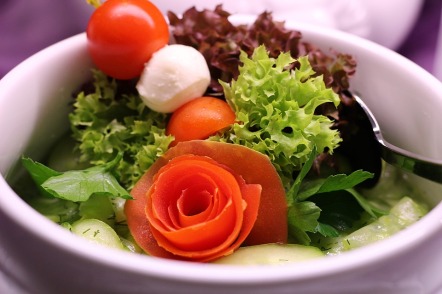
Around May time I get a yearning for the crisp crunch of lettuce, the peppery taste of watercress and Rucula, the smooth buttery taste and feel of avocados – I lose my appetite for parsnips and stews with mashed potato and butternut and carrot soups, preferring gazpacho, cold and tangy with an omelette for lunch.
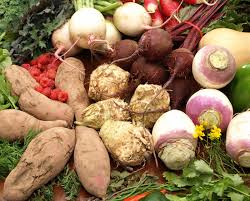
The same happens again in September when I start to think about more root vegetables and warming foods. I think you get the idea.
Our bodies over the last hundreds of thousands of years, would have been sustained by seasonal foods, both animal and plant.

It makes sense that we would therefore get the most nutritional benefit from seasonal foods, with the added benefit of an abundance of other fruits and vegetables that we now have year round. It is wonderful to have this access to so many varieties because they offer us so much more than our ancestors could scratch together.
I am fully supportive of any ‘diet’ programme than encourage us to only use fresh produce and cook it from scratch, but some trendy diets out there are a bit too restrictive, and you need to include other fruits and vegetables and other food groups that were not necessarily available to our ancestors.
If you make seasonal fruit and vegetables your primary choices, you can add in others to provide a more varied and balanced diet. This is why I follow the Gentle Detox seasonally every three months and not just at the beginning of the year. It marks the change in different eating patterns from the more stodgy, carbohydrate driven diet for the winter months to the lighter spring available food and the even lighter summer options and then back again.
Doing any form of detox should not put your body under increased stress but alleviate it. Which is why, this programme is not intended to be used as a crash diet, with few calories and nutrients. Even if you wish to lose weight as well as detox your system, you must not consume below 1500 calories if you are a woman or 1800 as a man.
How many calories do you need each day?
Basal metabolic rate – BMR establishes the approximate calories your body needs to function. At rest, with your digestive system inactive. So basically, first thing in the morning when your organs have been idling, rather than fully functional. This is dependent on your age and gender and as we age our requirement for calories decreases which is why you need to make sure you are compensating by including plenty of activity.
The simplest thing is to give you a link so that you can establish according to your age and gender what the minimum calories your body requires. However, it is important to point out that whilst calories are vital, it is also critical that those calories be as nutritious as possible. Particularly, if you are planning on cutting down calorie intake to lose weight.
Calculate your Basic Metabolic Rate… and add in your activity level to identify how many calories your body needs: BMR Calculator
For example my basal metabolic rate at 69 is currently 1300 calories per day based my height and weight. That is not taking into account the calories required to operate my digestive system, organs such as my brain and heart, lungs, liver and kidneys etc. If you are not desk bound, walking around, doing shopping, housework, etc. you will use about 100 calories per hour – in activity and operating the body. That will add about 500 calories per day. If you are exercising once a day for twenty minutes, with a brisk walk you can add anther 100 to 150 calories per day.
Men use slightly more because of body mass so I use 2000 calories basic requirement for women and 2,300 for men.
I never drop calories for an individual to less than 1500 for women and 1800 for men per day. And the food within that calorie restriction needs to be nutrient dense to make sure the body is still provided with what it needs to be healthy. They should also be sourced from good quality fresh products.
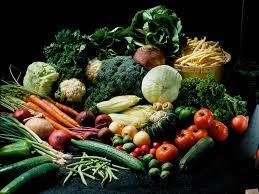
Your meals should be prepared from scratch using these ingredients, and if you are not very experienced in the kitchen, then do get yourself one of the many excellent cookery books available that promotes healthy produce and preparation. If you pop in every other Wednesday you will find great recipes that are cook from scratch and nutrient dense Smorgasbord Health with Sally Cronin and Carol Taylor – Cook from Scratch to prevent nutritional deficiency
Don’t buy pre-chopped salads and vegetables
To prepare these meals you have to first buy your ingredients and in step two I would like you to think more carefully when you buy produce. For example buy whole vegetables and fruits rather than pre-chopped.
Cabbage will lose at least 50% of its nutritional content once it is chopped and the longer it sits there in that plastic bag the more it will lose. This also applies to bags of chopped salads. It is also a more expensive way to buy your vegetables and fruit. Check the prices but I am pretty sure that the extra that you pay for convenience multiplied over a year will easily pay for a week if not more of shopping.
Also do not be afraid to buy cheaper cuts of meat and get out the slow cooker to prepare a casserole or a roast while you are out at work. You will save both time and money. Visit a farmer’s market and buy your vegetables without them passing through the hands of the distributors. You may find they are all shapes and sizes, rather than beautiful but the nutrients in them are the same.
Bring them home and blanch in salted boiling water for five minutes and then freeze in Ziploc bags. They will only take a few minutes in a microwave or in boiling water to finish cooking.
Here is a basic shopping list you can cut and paste into a word document and take with you when you do your next shop. Printable Grocery Shopping List.
As you can see it is not restrictive to the same degree as some of the very rigid detox programmes, but is intended to give you all the food groups in moderation.
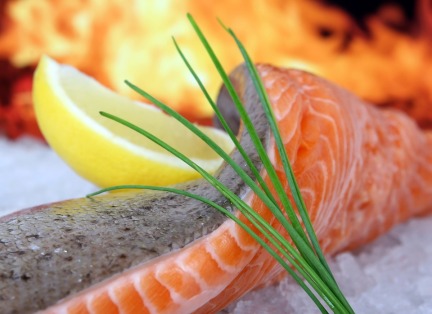
Vegetables – carrots, red peppers, broccoli, spinach, cauliflower, corn on the cob- any dark cabbage or Brussel sprouts, onions, mushrooms, tomatoes, watercress, dark lettuce leaves, cucumbers, celery, avocados and potatoes. (Any other fresh seasonal produce you enjoy) At least five or six portions a day – use a cupped handful as an estimated portion size.
Lower Fructose Fruit – Bananas, kiwi, strawberries and any dark berries that are reasonably priced – try frozen. Enjoy all fruit in season at least three portions a day.
Hot lemon and water first thing in the morning will not only give you a Vitamin C hit, start your digestive process off but will also help with sugar cravings.
Wholegrains – brown rice- wholegrain bread – whole wheat pasta – Weetabix – shredded wheat – porridge oats. Please do not buy sugar or chocolate covered cereals – more sugar than goodness. Carbohydrates are an important food group.
However, as we get older and less active you really only need a large spoonful of rice or potatoes on a daily basis. If you suffer from a Candida overgrowth be aware that it may not be the yeast in bread that causes a problem but the sugar or its substitute.
Fish – Salmon fresh and tinned- cod – haddock (again frozen can be a good option) any white fish on offer – shellfish once a week such as mussels. Tinned sardines, Tuna and herrings – great for lighter meals. (Any fish that is available fresh not from farmed sources)
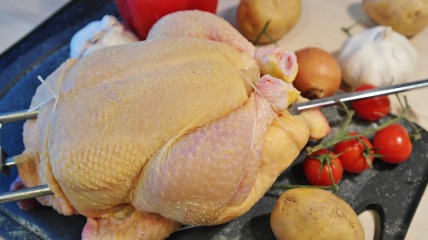
Meat and poultry –chicken or turkey – lamb, beef and pork. Lean ham for sandwiches, (processed meats should be used sparingly) Venison if you enjoy it. Liver provides a wonderful array of nutrients served with onions and vegetables is delicious. Tofu for vegetarians has become more accessible and can be used by non-vegetarians once a week to provide the other benefits of soya it offers.
Nuts and seeds – to put on your cereal in the mornings or as snacks – check prices out in your health food shop as well as supermarket. Almonds, Brazil nuts, pumpkin seeds, flaxseeds, walnuts.

Dairy and Eggs– Milk, butter -yoghurt. Free Range Eggs – have at least three or four eggs a week.
What is very important is that you eat dairy from grass fed cows, not grain fed.. and if you buy meat, it should also come from grass fed animals. The reason being that the vital vitamin K2 is only present when protein comes from grass fed stock. (more about that in a new series on deficiencies later in January). The butter will be yellow in colour and it should state on the label that it comes from a grass fed herd.
Oils – Extra virgin Olive Oil (least processed) – great drizzled on vegetables with some seasoning and also eaten the Spanish way with balsamic vinegar on salads and also drizzled over toasted fresh bread. If you do not like the taste of Olive Oil then use Sunflower oil – do not use the light version of any oil as it has been processed heavily – use the good stuff. For cooking use ordinary virgin olive oil with a dash of sunflower or butter but do not heat to very high temperatures. You can also use coconut oil which tolerates higher temperatures well and has some additional health benefits.
Honey and extras –You really do need to avoid sugars refined and in cakes, sweets and biscuits but honey is a sweetener that the body has been utilising since the first time we found a bee hive and a teaspoon in your porridge is okay. Try and find a local honey to you. You can also use a small spoonful of Manuka Honey which is produced in New Zealand. To obtain the medicinal benefits the honey should be classified as 15+.
Sauces – If you buy your sauces in jars and packets they will have a great many more ingredients than you bargained for. One of the worst is sugar or its substitutes. The greatest cooking skill you can develop is to be able to make a wide variety of sauces from scratch. If you do this you will be not only using fresh produce with its nutritional punch but also taking hundreds of pounds of sugar out of your diet over a lifetime.
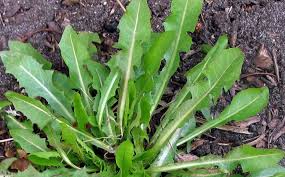
Fluids– Green Tea and other herbal teas including dandelion, peppermint and a combined detox tea., tap and mineral water, coffee 1 cup a day (not instant but ground coffee) Black tea also has antioxidants so drink a couple of cups a day. Try with sliced lemon and get some Vitamin C. (depending on the climate and altitude at which you live you will need to experiment to find out how much fluid you need. If you have very low humidity you will need considerably more. Average is around the 2 litres per day of combined fluids).
Next time I will be covering willpower which is another ingredient required a few days into any new health and lifestyle upgrade….
I hope you have found this of interest and any questions please don’t hesitate to ask..
©sally cronin Just Food for Health 1998 – 2022
A little bit about me nutritionally. .

About Sally Cronin
I am a qualified nutritional therapist with twenty-four years experience working with clients in Ireland and the UK as well as being a health consultant on radio in Spain.
Although I write a lot of fiction, I actually wrote my first two books on health, the first one, Size Matters, a weight loss programme 20 years ago, based on my own weight loss of 154lbs. My first clinic was in Ireland, the Cronin Diet Advisory Centre and my second book, Just Food for Health was written as my client’s workbook. Since then I have written a men’s health manual, and anti-aging programme, articles for magazines, radio programmes and posts here on Smorgasbord.
You can buy my books from: Amazon US – and:Amazon UK – Follow me :Goodreads – Twitter: @sgc58 – Facebook: Sally Cronin – LinkedIn: Sally Cronin

Thanks so much, Sally. I found a site that converts my Weight Watchers Points to calories… basically you figure for my height, weight, and age 50 calories per point which came out to 25-28 points a day… which they recommended for me. Now, I feel better about where I’m at. That BMR calculator was just what I needed to see! Huge hugs. ❤
LikeLiked by 1 person
Great Colleen glad to give you some extra confidence about your programme ♥♥
LikeLiked by 1 person
It made me feel good! ❤
LikeLiked by 1 person
♥
LikeLiked by 1 person
Interesting and informative article Sally. I agree with you completely. I don’t go after fancy diet regime. I truly believe that our body can process well with the natural sources .
LikeLiked by 1 person
Thanks Sowmya and certainly enhancing with spices does assist the body to do that well..hugsx
LikeLiked by 1 person
Ha ha . Hugs Sally
LikeLiked by 1 person
What an interesting post, Sally! I try to buy local as far as I can. It helps our farmers and other food producers and ensures that we eat seasonal food. I mostly cook from scratch too. To counteract the effects of GERD I’m eating substantially smaller meals than I used to, especially in the evening, and it’s made a huge difference to my digestive health, and my weight. I’ve had to buy SMALLER sixed clothes for the first time in more than 20 years! (Not that I’m exactly rake-like).
LikeLiked by 1 person
Thanks Chris and like you I now eat smaller meals and just have a light supper in the evening.. I have no idea how people manage a night in the pub and then have a large curry before bed. That is always a buzz when you can buy a smaller size….hugsx
LikeLiked by 1 person
My beer and curry days are long over, Sally. Probably just as well!
LikeLiked by 1 person
♥♥
LikeLiked by 1 person
Hi – enjoyed your post and the great tip about pre-cut veggies and fruit – less nutrition and sometimes triple the price (because you pay for that preparing) and then usually the pre-cut items sit also in plastic and have more exposures to that – so always fresh
–
I was surprised to see bananas the low glucose list – in most of my healing circles the banana is viewed as high sugar ad one bite can go a long way – but if anyone is healing – we believe that all sugar – even fruit sugar – even agave and even local honey – has to be avoided until the body terrain is strong again.
__
oh and also love the point about eating in season and then listening to your body for what it needs through the changing weather and elements in one’s area – I just finished a comfort soup with chicken and it is really cold winter weather – but you are so right because come spring – the crunch of veggies calls and different items for that time…
wishing you a good week and happy eating
LikeLiked by 1 person
Thanks Yvette and glad you found interesting. The banana is so much more than its sugar and is a nutritional package ready wrapped. As part of healing it contributes to maintaining a healthy blood pressure – the fibre can also help balance blood sugar levels, and unripe bananas have been shown to improve insulin sensitivity and improve kidney health. There are a number of studies ongoing, including weight loss and heart health. I certainly would not eat more than two or three times a week but they are definitely on my shopping list..
LikeLiked by 1 person
Thanks for that detailed explanation – and I know they are also loaded with potassium and other quickly absorbed nutrients – and when I was a counselor in 2001- I worked with women who were getting their life back on track and a few of the ladies shared that when they were on the streets – they would buy a banana from 7-11 and it restored them.
—
Also- my mom and hubs have this awesome recipe for pancakes made with a banana, protein powder and eggs and makes a nice meal without cane sugar and without grains //
—
Thanks again for the explanation and you are right that the sugar content varies from
Unripe to ripe and then a few times a week makes a difference – and maybe that is okay for you with a healthy gut (and I recall that you healed from systemic candidiasis, right?)
So I still think certain ailments and certain folks who need major body healing should not regularly include bananas (and if they need fruit maybe consider berries – and citrus for alkalizing)
Thanks again for the reply
LikeLiked by 1 person
Hi again – was just over at the awesome “diet doctor” website and the banana was at the bottom of the list for fruits (they didn’t mention unripe) but for those now just healing – but those on a diet or keto minded banana are not suggested – I thought that was interesting
Here is the link just FYI
😊
https://www.dietdoctor.com/low-carb/keto/fruits
LikeLiked by 1 person
Thanks very much Yvette.. enjoy the rest of the week.
LikeLiked by 1 person
Pingback: Smorgasbord Health Column 2022 – The Gentle Detox – Part Two – Eat food your body recognises…and can work with! Sally Cronin | Retired? No one told me!
A great article. Thank you.
LikeLiked by 1 person
Thanks Pamela xx
LikeLike
Pingback: Smorgasbord Blog Magazine – Weekly Round Up – 10th – 16th January 2022 – Hits 1980s, Nat King Cole, Short stories, Podcast, Health, Reviews, Humour | Smorgasbord Blog Magazine
Excellent post, Sally, and this is pretty much how I eat already. Eating local and in season is fun, to me. And the way American grocery stores are set up, I can avoid almost every aisle (full of boxed, processed food) and just take a swing around the perimeter. Saves a lot of time!
LikeLiked by 1 person
I have to say that they are pretty good here too.. with the fresh fruit and veg the first food aisles you hit on your way in… I usually stock up well before going anywhere else.. ♥
LikeLiked by 1 person
Same here. 🙂
LikeLiked by 1 person
Practical and achievable – many thanks! xx
LikeLiked by 1 person
Great to hear thanks Alex..♥
LikeLike
An informative post, Sally commonsense reigns…Have scheduled for the 18th of Jan..jeez already halfway through January…Hugs xxx
LikeLiked by 1 person
Thanks Carol… lovely interview with Rebecca and have added the link in to the round up on Sunday.. ♥
LikeLiked by 1 person
Thank you, Sally that is much appreciated Hugs xx
LikeLiked by 1 person
I have to say I’ve been following your advice about not going below 1,500 calories if you are a woman and with great success. I was already eating a diet filled with veggies and fruits and only the occasional dairy and yet my 1,200 calorie diet had me stalled. With trepidation, I increased my calories by 300 a day and have been losing between a half pound and pound a week ever since, even through the holidays (well, one week level that’s all). So, I’m eating more and losing weight slowly but surely! I’m still amazed!
LikeLiked by 1 person
So pleased that continues to be the case Dorothy.. I know that we instinctively feel that eating less will aid weightloss but it is counter productive.. Great job…hugsx
LikeLiked by 2 people
Great info as always Sal. Oh yes, fall and winter are definitely crockpot season! Wouldn’t be without mine. Hugs ❤
LikeLiked by 2 people
Thanks Debby.. and they make life so much easier.. we love ours too.. ♥
LikeLiked by 1 person
❤
LikeLike
I’m enjoying warming stews at the moment that I put in my slow cooker. I’m also trying out black seed oil too, which I’m sure I can feel the effects of. x
LikeLiked by 2 people
Sounds great Stevie.. our slow cooker gets a good work out too.. Sunday Curry lunches a favourite..xx
LikeLiked by 1 person
Not curry, but we have lamb, turkey or chicken with a sauce and vegetables and sometimes dumplings if it’s icy! x
LikeLiked by 1 person
oh.. not had dumplings for a long time… too long.. xx
LikeLiked by 1 person
An excellent article, Sally. I don’t believe in fad diets either. Unfortunately, restricting your diet takes will power and is hard.
LikeLiked by 1 person
It is Robbie.. that’s why I do the gentle detox a couple of times a year. It is not so ‘cold turkey’ as many diets are and gives you a chance to make small but significant changes over a period of time. It is particularly difficult if you are not overweight but just want to make some healthy tweaks since there is not urgency. I take the long view and know that if I hadn’t made those changes 27 years ago I probably would not be nagging you today lol… ♥
LikeLiked by 1 person
I am trying to lick my dad and Michael into shape. They both love food and resent interference in their diet BUT, I pay for the healthcare. That is a big stick [smile].
LikeLiked by 1 person
It is tough when you love food… but you sound like you have them eating out of your hand…hugsx
LikeLiked by 1 person
Very interesting information, Sally! I think i have to extend my food much to the greenery. Since i am eating less “red” meat (pork and beef) i am indeed feeling much better. xx Michael
LikeLiked by 2 people
That’s good to hear Michael.. we have a mix of vegetables and wholegrain rice most days and I put together and give a blast in the microwave adding some fresh spinach and other green vegetable tops in.. often thrown away, washed and cut up they add quite a few nutrients.. xx
LikeLiked by 1 person
Gosh, so much green? Lol Even thought the national color of Ireland is green, dont forget the meat, Sally! :-)) hugsx
LikeLiked by 1 person
Never Michael.. the best beef, pork and lamb I have tasted, not to mention the Salmon from the rivers..hugs x
LikeLike
Reblogged this on NEW BLOG HERE >> https:/BOOKS.ESLARN-NET.DE.
LikeLiked by 1 person
Thanks for sharing Michael…hugsx
LikeLiked by 1 person
Another great, informative post, Sally! I’m learning more about in-season fruits and vegetables. I tend to stick to my favorites, but I know I need to change things up every season. I just need to figure out what I like outside of my favorites. 🙂
LikeLiked by 1 person
I know the feeling Yvette.. we have a slightly less diverse range of fruit and vegetables in the winter season than perhaps you might have all year around. I think a useful hack is to take a fruit or vegetable that perhaps you are not as keen on and enhance with a recipe. I am not too keen on turnip and swede but when mashed with carrot or in a soup I don’t mind as much. as they say.. variety is the spice of life..hugsx
LikeLiked by 1 person
I’ll keep that in mind, Sally. Thanks! 🙂
LikeLiked by 1 person
A really important article, Sally. I really liked your recommendations on daily calories and on choosing seasonal foods. Toni x
LikeLiked by 3 people
Thanks very much Toni.. ♥
LikeLiked by 1 person